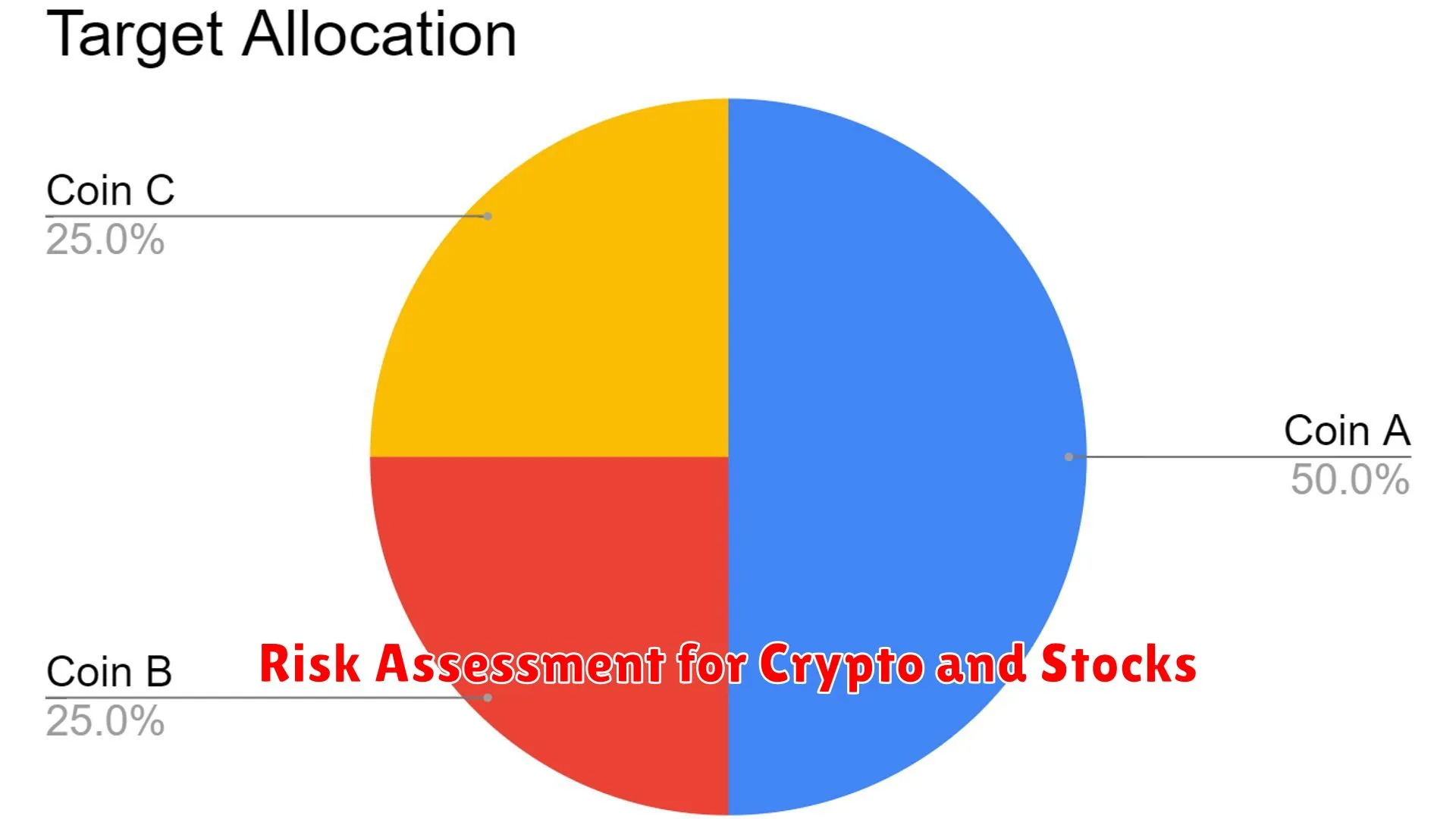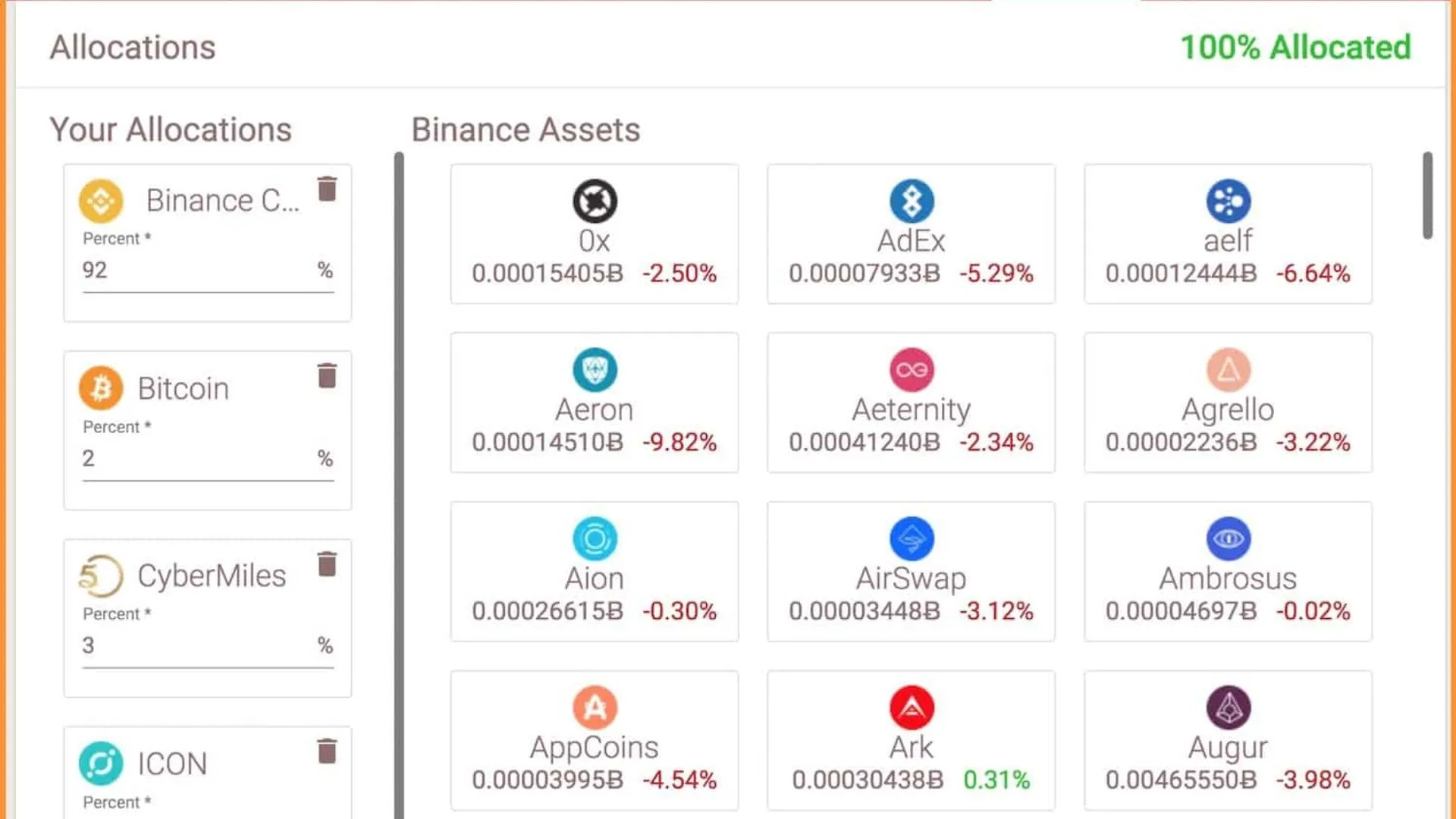Learn how to achieve optimal returns by striking a balance between your cryptocurrency and stock investments. Discover strategies to diversify effectively in the volatile world of finance.
The Benefits of Portfolio Diversification

Portfolio diversification is a key strategy in smart investing, especially when balancing your crypto and stock portfolio. Diversifying your investments means spreading your money across different asset classes, industries, and geographical regions to reduce risk.
Risk Mitigation: By diversifying your portfolio, you are not putting all your eggs in one basket. If one sector or market underperforms, the losses can be offset by better-performing investments in other areas.
Enhanced Stability: A well-diversified portfolio can help stabilize your overall returns. When one asset class is experiencing volatility, another may be performing well, balancing out the highs and lows.
Opportunity for Growth: Diversification provides exposure to a wide range of investment opportunities. By including different types of assets, you can benefit from growth in various sectors and capitalize on emerging trends.
Reduced Impact of Market Swings: Crypto and stock markets can be highly volatile. Diversification helps minimize the impact of sudden market swings on your portfolio by spreading risk across different assets.
Long-Term Wealth Building: Over time, a diversified portfolio can potentially generate more stable returns and sustain long-term wealth accumulation. It is a prudent strategy for investors looking to achieve financial goals while managing risk effectively.
Determining Your Investment Mix

When it comes to smart investing strategies, finding the right balance in your crypto and stock portfolio is crucial. Determining your investment mix involves weighing various factors to ensure a diversified and resilient portfolio.
1. Risk Tolerance and Goals
Consider your risk tolerance and financial goals. Are you comfortable with the volatility of cryptocurrencies, or do you prefer the stability of stocks? Define your investment objectives, whether it’s long-term wealth growth or short-term gains.
2. Asset Allocation
Allocate your assets based on your risk profile. Diversification is key to reduce risk. Balance your portfolio with a mix of cryptocurrencies and stocks to spread out risks and capture potential growth opportunities in different market conditions.
3. Market Research and Tracking
Stay informed about market trends and developments in the crypto and stock markets. Conduct thorough research on individual assets before investing. Regularly monitor your portfolio performance and make adjustments as needed to align with your investment mix.
4. Rebalancing and Review
Periodically review your investment mix and rebalance your portfolio to maintain the desired allocation. As market conditions evolve, your initial investment mix may shift. Reassess your risk exposure and adjust your holdings accordingly.
Risk Assessment for Crypto and Stocks

When it comes to smart investing and balancing your portfolio between cryptocurrency and stocks, it is crucial to conduct a thorough risk assessment. Both asset classes come with their own set of risks, and understanding these risks is essential for making informed investment decisions.
Volatility
Cryptocurrency: The crypto market is known for its high volatility, with prices capable of experiencing significant fluctuations in a short period of time. This volatility can result in substantial gains but also carries the risk of substantial losses.
Stocks: While stocks are generally considered less volatile than cryptocurrencies, they are still subject to market fluctuations. Factors such as company performance, economic conditions, and geopolitical events can all impact stock prices.
Regulatory Environment
Cryptocurrency: The regulatory environment surrounding cryptocurrencies is still evolving, with varying levels of acceptance and scrutiny in different countries. Changes in regulations can have a significant impact on the value and legality of certain cryptocurrencies.
Stocks: Stocks are subject to regulatory oversight as well, with changes in regulations potentially affecting company valuations and operations. Keeping abreast of regulatory developments is crucial for stock investors.
Liquidity
Cryptocurrency: Liquidity in the crypto market can vary significantly depending on the digital asset being traded. Low liquidity can make it challenging to execute trades at desired prices, leading to potential losses.
Stocks: Stocks of well-established companies typically have high liquidity, making it easier for investors to buy and sell shares. However, stocks of smaller companies or those in specific sectors may have lower liquidity levels.
By assessing the risks associated with both cryptocurrency and stocks, investors can better navigate the complexities of the financial markets and make informed decisions to achieve a balanced and diversified investment portfolio.
Rebalancing Tactics

When it comes to smart investing in both cryptocurrencies and stocks, one of the key strategies to maintain a healthy portfolio is through rebalancing tactics. Rebalancing involves adjusting the mix of assets in your investment portfolio to ensure it aligns with your financial goals and risk tolerance.
Regular Portfolio Assessment
Regularly assessing your portfolio is crucial to identify if your asset allocation has shifted. Monitoring the performance of your investments allows you to determine if any particular asset class, whether crypto or stocks, has become overweight or underweight.
Setting Allocation Targets
Establishing allocation targets can help guide your portfolio rebalancing decisions. Decide on the percentage of your portfolio that you want to allocate to cryptocurrencies and stocks, and adjust as needed to maintain the desired balance.
Timing and Frequency
Deciding when to rebalance your portfolio and how often depends on your investment strategy and market conditions. Some investors opt for quarterly or annual rebalancing, while others may rebalance based on specific thresholds being met.
Tax Implications
Consider the tax implications of rebalancing your portfolio, especially in cryptocurrencies where transactions may trigger taxable events. Consult with a tax professional to make informed decisions that align with your financial goals.
Tracking Portfolio Performance

When it comes to smart investing and balancing your crypto and stock portfolio, tracking portfolio performance is crucial. Monitoring the performance of your investments allows you to assess how well your portfolio is doing and make informed decisions on whether any adjustments are necessary.
1. Utilize Performance Metrics: Use key performance metrics such as return on investment (ROI), volatility, and correlation to evaluate the performance of your portfolio. These metrics provide insight into the profitability and risk associated with your investments.
2. Regular Review: Make it a habit to regularly review your portfolio’s performance, whether on a monthly, quarterly, or annual basis. This allows you to stay informed of any significant changes and take timely actions to optimize your portfolio.
3. Benchmark Comparison: Compare your portfolio’s performance against relevant benchmarks, such as market indices or industry averages. This comparison helps you understand how your investments are performing relative to the broader market.
4. Diversification Assessment: Assess the diversification of your portfolio by analyzing the distribution of assets across different asset classes, sectors, and geographic regions. Diversification can help reduce risk and enhance overall portfolio stability.
By tracking portfolio performance effectively, investors can stay in control of their investments, identify areas for improvement, and align their portfolio with their financial goals.
Conclusion
Smart investing involves balancing your crypto and stock portfolio strategically to optimize returns and manage risks effectively in the volatile market.




